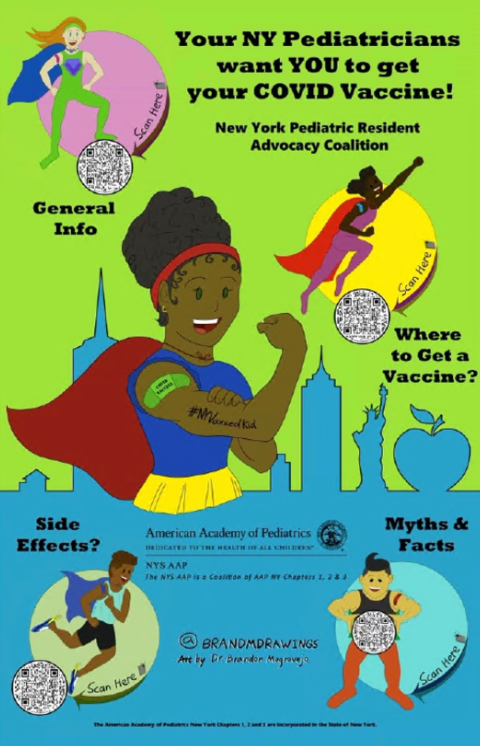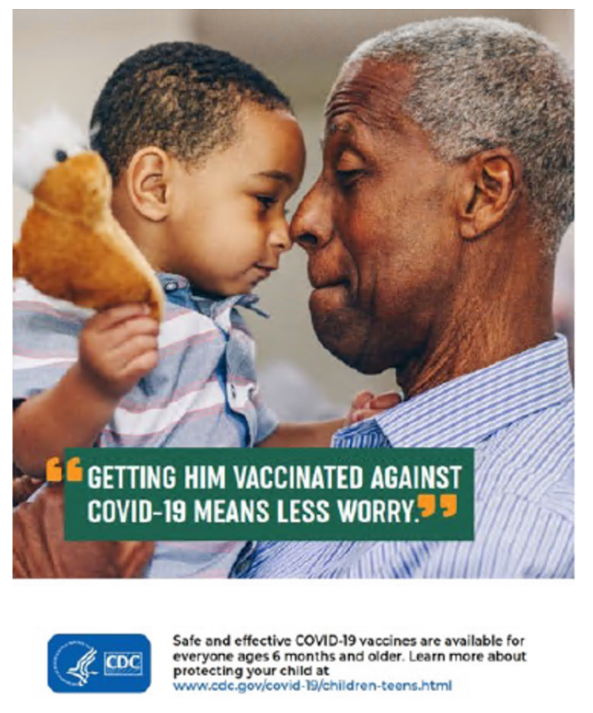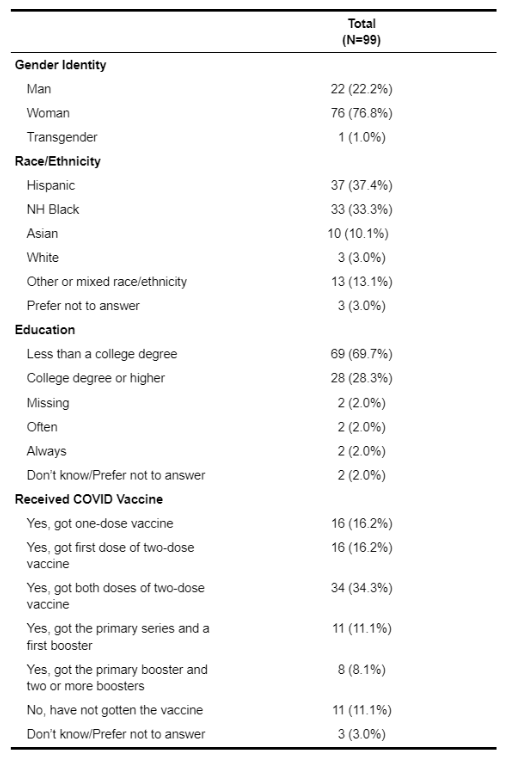Public Health & Prevention 4
Session: Public Health & Prevention 4
794 - Messages that Motivate: An Analysis of Parent/Caregiver Perspectives on Pediatric COVID-19 Vaccine Campaigns
Monday, April 28, 2025
7:00am - 9:15am HST
Publication Number: 794.6034
Saskia Shuman, Ifh, Brooklyn, NY, United States; Devin Madden, Icahn School of Medicine at Mount Sinai, New York, NY, United States; Timnit Berhane, Icahn School of Medicine at Mount Sinai, New York, NY, United States; Nita Vangeepuram, Icahn School of Medicine at Mount Sinai, New York, NY, United States

Nita Vangeepuram, MD, MPH (she/her/hers)
Associate Professor
Icahn School of Medicine at Mount Sinai
New York, New York, United States
Presenting Author(s)
Background: Parent/caregiver hesitancy about the pediatric COVID-19 vaccine is a challenge, especially among racially/ethnically minoritized communities. Public health professionals strive to identify the best approaches for messaging to this population.
Objective: Our community/academic coalition conducted surveys with racially/ethnically diverse parents/caregivers in New York City to examine which pediatric COVID-19 vaccine messaging strategies motivate parents to vaccinate their children.
Design/Methods: Parents, recruited through partner CBOs and a large hospital-based pediatric clinic, reviewed 12 existing pediatric COVID-19 vaccine messages with varied design components (e.g., images, text, and sources). Participants answered questions on message understandability, believability, trustability, motivational quality, and sociodemographics. We used descriptive statistics to identify the two most motivating messages and pooled data from all the messages and logistic regression to identify which characteristics were associated with motivation to vaccinate.
Results: In total, 99 parents/caregivers completed the survey with a mean age of 35.9 years (SD = 10.2). Table 1 presents other demographic and descriptive characteristics. Most respondents were women, racially/ethnically minoritized, and had less than a college degree. Almost 70% had received ≥1 dose of the COVID vaccine. Among parents with unvaccinated children, only 3.2% were planning to vaccinate their children soon, while 25.8% said they would not vaccinate and 51.6% planned to wait and observe the vaccine’s effects. The two most motivating vaccine messages were from the AAP (Fig 1) and the CDC (Fig 2). Across all messages, men had lower odds than women of reporting that the messages motivated them (OR 0.49, 95% 0.47-0.51) and specifically to take action (e.g., speak to their child’s doctor or make an appointment, OR 0.69, 95% CI 0.66-0.73). There was a marginal association between message believability and motivation to vaccinate (OR 3.1, 95% CI 0.8-11.6). There were also associations between trust in the message source and overall motivation to vaccinate (OR 5.8, 95% CI 1.6-26.8) and motivation to think about vaccinating (OR 3.7, 95% CI 1.3-11.5) but not motivation to take action.
Conclusion(s): In this diverse sample of NYC vaccine-hesitant parents/caregivers, vaccine messages from the AAP and CDC were the most motivating. Women were more likely than men to be motivated by the messages. While message believability and trust in the message source may impact motivation to think about vaccination, it was not associated with motivation to take action.
Figure 1. AAP Flyer Image

Fig 2. CDC Flyer Image

Table 1 Participant Demographic and Descriptive Characteristics


